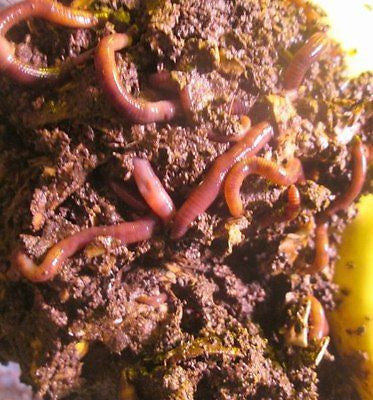Composting champions red wigglers: Feeding them properly
Composting champions red wigglers: Feeding them properly
Blog Article
Using Red Wigglers for Effective Organic Waste Disposal
Using red wigglers for organic garbage disposal provides a compelling strategy to handling food scraps while advertising environmental sustainability. These worms not just enhance waste disintegration however additionally generate valuable worm castings, which can dramatically boost soil health. Their ability to refine big volumes of natural product with very little initiative positions them as an accessible option for households and neighborhoods alike. Nonetheless, comprehending the subtleties of setting up an effective worm container and maintaining an ideal environment is essential for optimizing their benefits. The following action in this procedure may amaze you.
Advantages of Utilizing Red Wigglers
Among one of the most engaging advantages of using red wigglers for organic waste disposal is their amazing effectiveness in composting. These worms, clinically referred to as Eisenia fetida, are especially adjusted for damaging down natural products, allowing them to refine waste approximately two times their body weight daily. This quick decomposition not just accelerates the composting procedure yet likewise creates nutrient-rich worm spreadings that significantly enhance soil quality.
Additionally, red wigglers contribute to a reduction in landfill waste. By drawing away natural products from garbage dumps, they help reduce methane discharges-- a potent greenhouse gas. This ecological advantage is critical in the battle versus climate change.
Moreover, red wigglers are low-maintenance and can grow in numerous atmospheres, making them easily accessible for both beginner and skilled composters. Their ability to duplicate swiftly ensures a steady populace, assisting in ongoing waste handling.
Establishing Up Your Worm Bin
Producing a reliable worm bin is important for optimizing the benefits of composting with red wigglers. The first action is selecting an ideal container. A bin made of plastic or timber, with a capacity of 10 to 20 gallons, is excellent. Make sure the bin has ample drain openings to stop excess dampness, as red wigglers prosper in a damp however not soaked atmosphere.
(buy red wiggler worms)Following, prepare the bed linens product, which serves as the worms' habitat and food resource. The container ought to be placed in a dark, temperature-controlled location, preferably between 55 ° F and 77 ° F, to maintain worm task.
When the bin is established up, introduce the red wigglers, enabling them to adjust to their brand-new environment. A properly maintained bin will certainly not only support the health of the worms however additionally help with reliable decay of organic waste.
(red wiggler worms)
What to Feed Red Wigglers
An understanding of the suitable diet for red wigglers is vital for keeping a healthy and balanced worm population and optimizing composting efficiency. These things not only offer essential nutrients yet additionally contribute to the moisture equilibrium within the worm bin.
It is essential to avoid particular foods that can hurt the worm population. Red wigglers need to not be fed meat, milk products, oily foods, or refined products, as these can attract bugs and develop undesirable odors. red wigglers. In addition, citrus fruits and hot foods should be decreased, as their acidity can be harmful to worms
Checking the worm bin for food usage prices will assist make sure that red wigglers are receiving a sufficient diet plan while keeping an efficient composting atmosphere. Correct feeding techniques are important for promoting a growing ecosystem within the worm bin.
Preserving Your Worm Environment
A properly maintained worm environment is crucial for the wellness and performance of red wigglers. To make certain optimum problems, it is vital to keep an eye on temperature level, wetness, and aeration within the worm bin (red wigglers).
A good regulation of thumb is to preserve moisture at approximately 70% to 80%. If the bed linens ends up being too damp, it can lead to anaerobic conditions that are harmful to the worms.

Using Worm Castings in Gardening
Rich in nutrients and useful bacteria, worm spreadings act as an exceptional organic fertilizer for gardening. Produced through the gastrointestinal processes of red wigglers, these castings include a range of vital nutrients, including nitrogen, phosphorus, and potassium, which promote robust plant growth. Unlike synthetic fertilizers, worm castings offer a slow-release mechanism, ensuring that nutrients are available to plants over an red wiggler earthworms for sale extended duration, therefore lowering the threat of nutrient leaching and dirt exhaustion.
Along with vitamins and mineral material, worm castings boost soil framework and aeration, improving dampness retention and drainage. The microbial life existing in worm castings aids to reduce pathogens and advertises a healthy dirt community, more benefiting plant health. When integrated into the soil or made use of as a leading clothing, worm castings can significantly improve seed germination rates, origin development, and general plant vitality.
For optimal outcomes, gardeners must apply worm castings at a price of 1-2 inches per square foot, mixing them right into the dirt or integrating them right into potting mixes. Generally, using worm spreadings is an eco-friendly strategy to enriching dirt fertility and ensuring flourishing yard environments.
Final Thought

Report this page